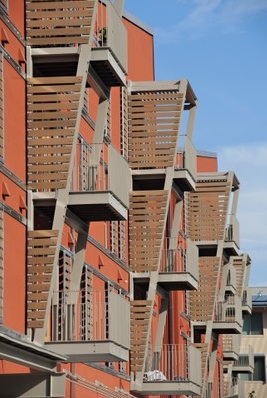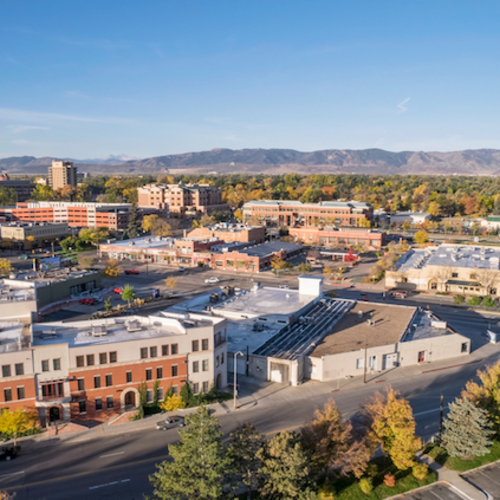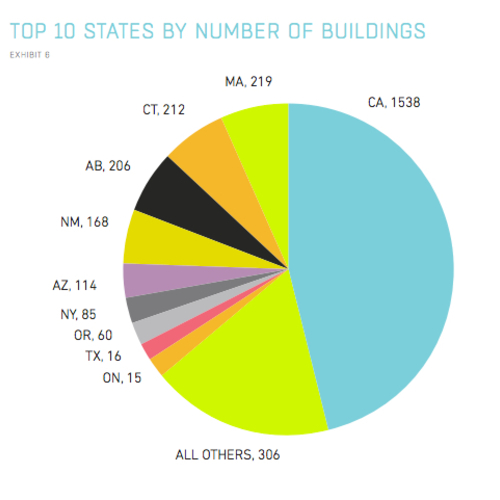Image Credit: Karin Higgins/UC Davis (images 1 and 2), Greg Urquiaga/UC Davis (image 3), UC Davis (image 4)
Image Credit: Karin Higgins/UC Davis (images 1 and 2), Greg Urquiaga/UC Davis (image 3), UC Davis (image 4) A common area near the Viridian Apartments, which, with a second complex, Ramble Apartments, will house about 800 students, faculty and staff. Metal sun shields on the Ramble Apartments. Shading is especially helpful in Davis, whose Central Valley climate includes dry, intensely hot summer days. Phase I of West Village is complete. Phase II is expected to be completed in 2013. The entire project will include 662 apartments, 343 single-family homes, and 42,500 square feet of commercial space.
In August 2009, construction began at the University of California at Davis West Village, amid proclamations that the project would become one of the nation’s largest and most ambitious university developments designed to operate at net zero energy.
Certainly its scale suggests it will live up to the first part of that promise. West Village’s plans include 662 apartments and 343 single-family homes (enough housing for about 3,000 people), 42,500 sq. ft. of commercial space, and several on-site renewable-energy installations, including a 4-megawatt photovoltaic system – all on about 205 acres.
Last month, the school celebrated the completion of Phase I, a $300 million, 130-acre segment of the project that includes 315 apartments, the commercial facilities, and a 15,000-sq.-ft. recreation center.
According to UC Davis, net zero energy performance will be achieved due to design and construction details such as added exterior-wall insulation, solar-reflective roofing, radiant barrier roof sheathing, energy-efficient appliances and fixtures, carefully designed roof overhangs, and window sunshades.
A giant NZE lab experiment
Although two of West Village’s apartment complexes are newly occupied – about 800 students have already moved in – and are being monitored for energy use, it is too early to tell how they’re likely to perform. The project’s designers estimate that the energy-efficiency features of these buildings will reduce electricity use by 50% compared to buildings of comparable size built to code. Similar energy efficiency is expected for the single-family homes.
The 4-megawatt photovoltaic installation and a biodigester – based on technology developed at UC Davis for converting organic waste into energy – are planned for West Village’s remaining build-out, Phase II, which is expected to be completed in 2013. Because West Village is so large, it’s not yet clear if its planned renewable-energy infrastructure will be adequate or whether it will have to be expanded to accommodate the community once it is fully populated.
UC Davis notes that the project is a giant laboratory for large-scale net-zero-energy applications and energy-efficiency research.
By Davis housing standards, it also is not cheap to live there. Student apartments rent for about $745 per bed per month, including utilities and unlimited broadband service. Single-family homes, the school says, will be available for sale to full-time faculty and staff not already owning a home in the Davis Joint Unified School District.
The neighborhood master plan for West Village also includes another, 94-acre phase that would add another 882 student beds and 132 single-family homes, but the school says that no timeline has been set for that portion of the project.
Weekly Newsletter
Get building science and energy efficiency advice, plus special offers, in your inbox.
















0 Comments
Log in or create an account to post a comment.
Sign up Log in